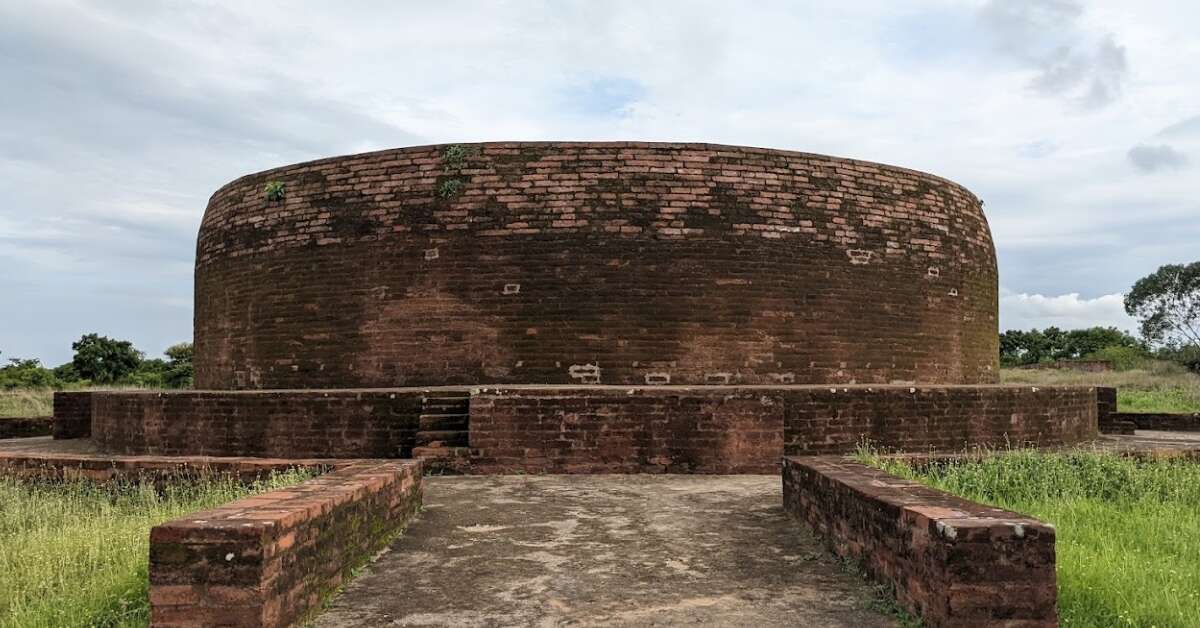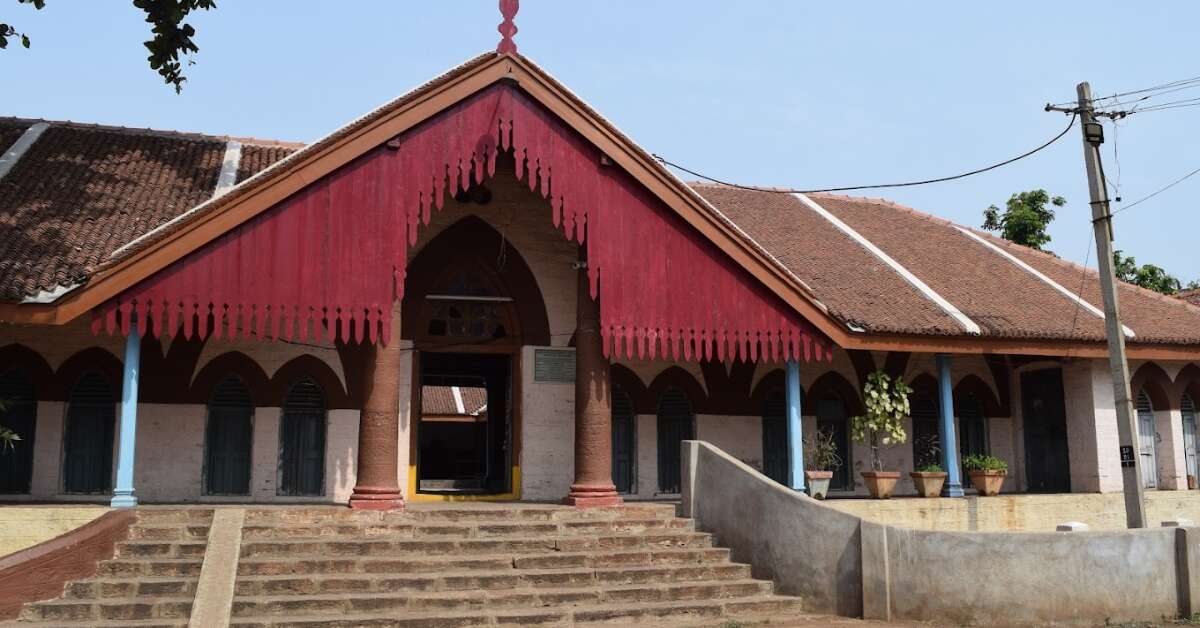To be human is to be tied to something bigger than ourselves. Whether it is to people we call family, to places we call home, or to things we call ours, we are all intertwined and defined in relation. This nature of connection transcends time, too. Our actions today are tied to the future, and in this very moment, our roots go back to a past that we’ve never experienced, yet it explains the world we live in. The gravity of being conscious of the olden days that shape us, thus, is beyond important. One of the most powerful ways to do so is by paying attention to our heritage, the history we’ve inherited and preserved.
Here in Vizag, we’re fortunate to have some remenants of the city’s heritage still existing among us. While some are well-known, others remain under a veil of mystery. This World Heritage Day, let us remove the veil and take a look at some less-known heritage sites of Visakhapatnam.
1. Scandal Point
 Every colonial city had its own “Scandal Point,” and yes, Vizag had one too. While today it’s just a forgotten rock with an obelisk, back in the day, it marked much more than just a boundary. It separated Vizagapatam, (as it was then called) where the locals lived, from Waltair, the residence of the European settlers.
Every colonial city had its own “Scandal Point,” and yes, Vizag had one too. While today it’s just a forgotten rock with an obelisk, back in the day, it marked much more than just a boundary. It separated Vizagapatam, (as it was then called) where the locals lived, from Waltair, the residence of the European settlers.
The newly built beach road, built for carriages, used to end right here at this point. More interestingly, Scandal Point was said to be the the meeting spot for memsahibs who gathered here in the evenings to gossip! From who danced with whom at last night’s ball to juicy whispers of affairs, arrests, and marriages, they talked about it all.
2. Rani Chandramani Devi Government Hospital
 Right in the heart of Pedda Waltair stands a majestic structure that once housed royalty, the Lakshmi Mahal Palace of Rani Chandramani Devi of Chemudu. Since 1965, the palace has transformed into the Rani Chandramani Devi (RCD) Children’s Hospital.
Right in the heart of Pedda Waltair stands a majestic structure that once housed royalty, the Lakshmi Mahal Palace of Rani Chandramani Devi of Chemudu. Since 1965, the palace has transformed into the Rani Chandramani Devi (RCD) Children’s Hospital.
With its grand portico, supported by elegant Doric columns, ashlar stone masonry, and intricately polished wooden staircases, the building still retains its regal charm. Originally a summer retreat for the queen, the palace features three rectangular halls on each floor, wide verandahs, and high ceilings that have stood the test of time.
The transition from palace to hospital has its own story. The queen, once treated by Dr M Gopala Kini, the first orthopaedic surgeon of King George Hospital, was inspired when she saw his clinic in Bombay (which he had set up after retirement). On medical advice and driven by philanthropy, she donated her palace and land to start a hospital for children.
3. Bavikonda
 Perched in Kapuluppada, Bavikonda – which literally translates to hill of wells – is dotted with water wells carved out of rock to collect rainwater. It’s one of the major Buddhist heritage sites in Visakhapatnam.
Perched in Kapuluppada, Bavikonda – which literally translates to hill of wells – is dotted with water wells carved out of rock to collect rainwater. It’s one of the major Buddhist heritage sites in Visakhapatnam.
Dating back to the 3rd century BC, Bavikonda flourished until about 300 AD. Discovered by a shepherd in 1977 and excavated by the State Archaeology Department in the ’80s and ’90s, it revealed an entire Theravada Buddhist complex. Think Mahastupa, vihara, chaitya halls (both circular and apsidal), congregation spaces, and votive stupas.
Perhaps most fascinating is an urn believed to contain a piece of the Buddha’s bone. Roman silver coins and Satavahana lead coins found here point to ancient trade links, connecting Bavikonda to the Roman Empire. This makes it not just spiritual, but a crucial link in maritime history.
4. St Anne’s Cathedral
 St Anne’s Cathedral is the first-ever Catholic Church in Vizag, dating back to the 1850s. The origin of this church goes back to 1770, when a Portuguese merchant named Paul Rosario donated his house to the visiting Theotine Fathers from Goa to be used as a chapel dedicated to St. Anne.
St Anne’s Cathedral is the first-ever Catholic Church in Vizag, dating back to the 1850s. The origin of this church goes back to 1770, when a Portuguese merchant named Paul Rosario donated his house to the visiting Theotine Fathers from Goa to be used as a chapel dedicated to St. Anne.
The original chapel was later pulled down, and on 2 February 1852, FrTissot laid the foundation stone for the new structure. Over the years, the church served multiple roles. It housed the Sisters of St Joseph from 1858 to 1898 and even served as a boarding home for boys from 1920 until 1939, when the facility was moved to St Anthony’s.
5. Madhava Swamy Temple
 In the peaceful Simhachalam hills lies a temple complex. It is nestled between three waterfalls – Gomukhadhara, Chakradhara, and Madhavadhara.
In the peaceful Simhachalam hills lies a temple complex. It is nestled between three waterfalls – Gomukhadhara, Chakradhara, and Madhavadhara.
The complex hosts three temples dedicated to Lord Madhava (a swayambhu form of Vishnu), Lord Venugopala Swamy, and Lord Shiva. It is believed that the Madhava Swamy Temple is as old as the famous Simhachalam Temple and acts as its Khsetrapalaka (protector deity).
There’s even a scenic trekking route from here to Simhachalam, and legend has it, a tunnel from the Madhava temple leads straight to the Simhachalam temple. Many also believe that the waterfall here has medicinal properties, making a dip feel both sacred and healing.
6. Turner’s Choultry
 If you’ve ever wandered a little past Jagadamba Junction toward Poorna Market, you’ve probably passed by Turner’s Choultry, perhaps without even noticing. But behind the street stalls is a structure that has housed generations of travelers since 1898.
If you’ve ever wandered a little past Jagadamba Junction toward Poorna Market, you’ve probably passed by Turner’s Choultry, perhaps without even noticing. But behind the street stalls is a structure that has housed generations of travelers since 1898.
Named after Henry Gribble Turner, a former Collector of Vizag, this “satram” was built by several zamindars including Maharaja Gode Narayana Gajapathi Row of Chemudu, who donated land in what was then called ‘Enugula Thota’ (Elephant Lines). Several other local royals including Vizianagaram, Bobbili, Jeypore, the Ankitam, Inuganti, Uppalapati families made generous donations.
With sixteen rooms built around a large central courtyard, this raised rectangular building served early pilgrims and later, patients visiting King George Hospital, which was built around the time and attracted many people from arounf town. Its architecture, with stone columns, intricate floral engravings, and arched windows, is a marvel on its own.
These lesser-known heritage sites of Visakhapatnam inform us about the city’s history and sometimes go unnoticed. So the next time you’re exploring the city, take a moment to seek out these hidden gems!
Stay tuned to Yo! Vizag website and Instagram for more city and news updates.










Discussion about this post